
- 6:00am
- 6:15am
- 6:30am
- 6:45am
- 7:00am
- 7:15am
- 7:30am
- 7:45am
- 8:00am
- 8:15am
- 8:30am
- 8:45am
- 9:00am
- 9:15am
- 9:30am
- 9:45am
- 10:00am
- 10:15am
- 10:30am
- 10:45am
- 11:00am
- 11:15am
- 11:30am
- 11:45am
- 12:00pm
- 12:15pm
- 12:30pm
- 12:45pm
- 1:00pm
- 1:15pm
- 1:30pm
- 1:45pm
- 2:00pm
- 2:15pm
- 2:30pm
- 2:45pm
- 3:00pm
- 3:15pm
- 3:30pm
- 3:45pm
- 4:00pm
- 4:15pm
- 4:30pm
- 4:45pm
- 5:00pm
- 5:15pm
- 5:30pm
- 5:45pm
- 6:00pm
- 6:15pm
- 6:30pm
- 6:45pm
- 7:00pm
- 7:15pm
- 7:30pm
- 7:45pm
- 8:00pm
- 8:15pm
- 8:30pm
- 8:45pm
- 9:00pm
- 9:15pm
- 9:30pm
- 9:45pm
- 10:00pm
- 10:15pm
- 10:30pm
- 10:45pm
- 11:00pm
- 11:15pm
- 11:30pm
- 11:45pm
Eat BREAKFAST

- 6:00am
- 6:15am
- 6:30am
- 6:45am
- 7:00am
- 7:15am
- 7:30am
- 7:45am
- 8:00am
- 8:15am
- 8:30am
- 8:45am
- 9:00am
- 9:15am
- 9:30am
- 9:45am
- 10:00am
- 10:15am
- 10:30am
- 10:45am
- 11:00am
- 11:15am
- 11:30am
- 11:45am
- 12:00pm
- 12:15pm
- 12:30pm
- 12:45pm
- 1:00pm
- 1:15pm
- 1:30pm
- 1:45pm
- 2:00pm
- 2:15pm
- 2:30pm
- 2:45pm
- 3:00pm
- 3:15pm
- 3:30pm
- 3:45pm
- 4:00pm
- 4:15pm
- 4:30pm
- 4:45pm
- 5:00pm
- 5:15pm
- 5:30pm
- 5:45pm
- 6:00pm
- 6:15pm
- 6:30pm
- 6:45pm
- 7:00pm
- 7:15pm
- 7:30pm
- 7:45pm
- 8:00pm
- 8:15pm
- 8:30pm
- 8:45pm
- 9:00pm
- 9:15pm
- 9:30pm
- 9:45pm
- 10:00pm
- 10:15pm
- 10:30pm
- 10:45pm
- 11:00pm
- 11:15pm
- 11:30pm
- 11:45pm
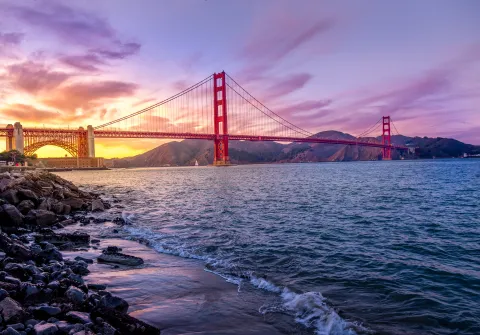
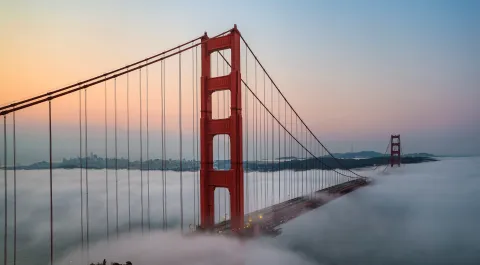
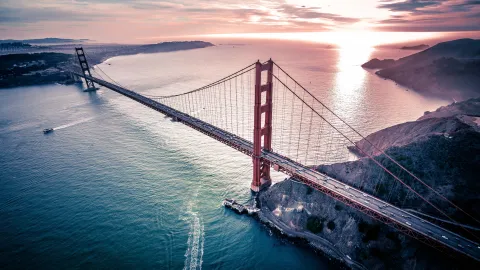
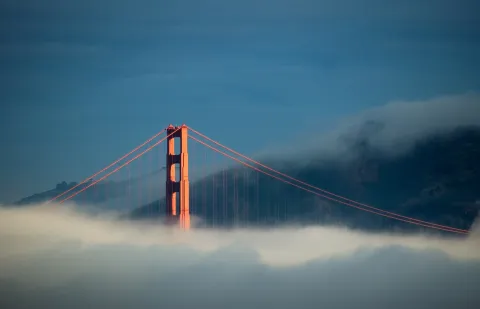
 1.0-2.0 hr stay
1.0-2.0 hr stay
Golden Gate Bridge (Free Entry)
Golden Gate Bridge, san francisco
The Golden Gate Bridge opened in 1937 and is the 1.7-mile-long iconic, most famous, a beautiful bridge connecting San Francisco to Marin County. The bridge is one of the world's Seven Wonders and the most photographed. The bridge is a symbol of American ingenuity and resolve, having been constructed during the era of the Great Depression. Today, this beloved international icon and true engineering marvel carries about 40 million vehicles a year and serves as a vital transportation link and a major travel destination for millions of visitors from around the world.

- 6:00am
- 6:15am
- 6:30am
- 6:45am
- 7:00am
- 7:15am
- 7:30am
- 7:45am
- 8:00am
- 8:15am
- 8:30am
- 8:45am
- 9:00am
- 9:15am
- 9:30am
- 9:45am
- 10:00am
- 10:15am
- 10:30am
- 10:45am
- 11:00am
- 11:15am
- 11:30am
- 11:45am
- 12:00pm
- 12:15pm
- 12:30pm
- 12:45pm
- 1:00pm
- 1:15pm
- 1:30pm
- 1:45pm
- 2:00pm
- 2:15pm
- 2:30pm
- 2:45pm
- 3:00pm
- 3:15pm
- 3:30pm
- 3:45pm
- 4:00pm
- 4:15pm
- 4:30pm
- 4:45pm
- 5:00pm
- 5:15pm
- 5:30pm
- 5:45pm
- 6:00pm
- 6:15pm
- 6:30pm
- 6:45pm
- 7:00pm
- 7:15pm
- 7:30pm
- 7:45pm
- 8:00pm
- 8:15pm
- 8:30pm
- 8:45pm
- 9:00pm
- 9:15pm
- 9:30pm
- 9:45pm
- 10:00pm
- 10:15pm
- 10:30pm
- 10:45pm
- 11:00pm
- 11:15pm
- 11:30pm
- 11:45pm
Eat LUNCH

- 6:00am
- 6:15am
- 6:30am
- 6:45am
- 7:00am
- 7:15am
- 7:30am
- 7:45am
- 8:00am
- 8:15am
- 8:30am
- 8:45am
- 9:00am
- 9:15am
- 9:30am
- 9:45am
- 10:00am
- 10:15am
- 10:30am
- 10:45am
- 11:00am
- 11:15am
- 11:30am
- 11:45am
- 12:00pm
- 12:15pm
- 12:30pm
- 12:45pm
- 1:00pm
- 1:15pm
- 1:30pm
- 1:45pm
- 2:00pm
- 2:15pm
- 2:30pm
- 2:45pm
- 3:00pm
- 3:15pm
- 3:30pm
- 3:45pm
- 4:00pm
- 4:15pm
- 4:30pm
- 4:45pm
- 5:00pm
- 5:15pm
- 5:30pm
- 5:45pm
- 6:00pm
- 6:15pm
- 6:30pm
- 6:45pm
- 7:00pm
- 7:15pm
- 7:30pm
- 7:45pm
- 8:00pm
- 8:15pm
- 8:30pm
- 8:45pm
- 9:00pm
- 9:15pm
- 9:30pm
- 9:45pm
- 10:00pm
- 10:15pm
- 10:30pm
- 10:45pm
- 11:00pm
- 11:15pm
- 11:30pm
- 11:45pm
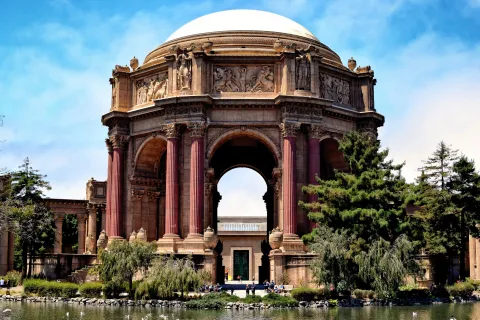
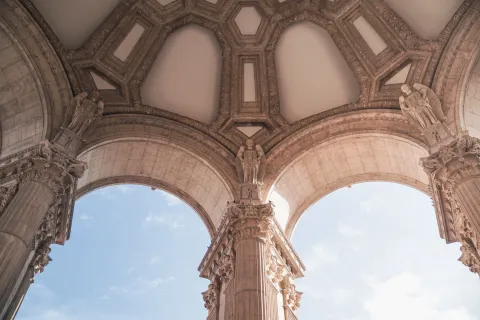
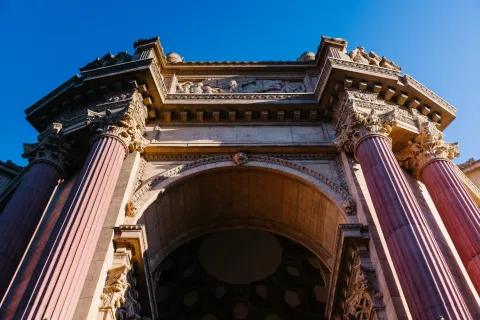
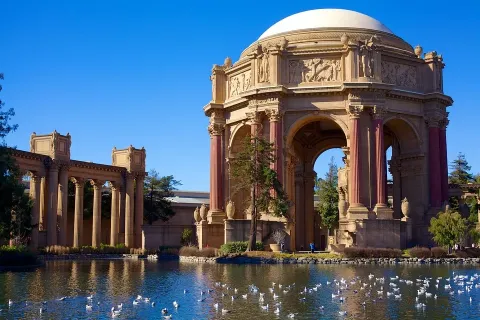
 0.5-1.0 hr stay
0.5-1.0 hr stay
Palace of Fine Arts (Free Entry)
3301 Lyon St, san francisco
Originally built for the 1915 Panama-Pacific Exhibition, this urban temple has become a San Francisco treasure, beloved by residents and visitors alike. The iconic Palace of Fine Arts, with its Greco-Roman style Rotunda and colonnades, is one of the most photographed sites in the City and has been featured in numerous film and TV productions. It’s also a popular wedding location and a spectacular performance venue.
- 1.6 MILES
- 38 minutes
- Get Directions

- 6:00am
- 6:15am
- 6:30am
- 6:45am
- 7:00am
- 7:15am
- 7:30am
- 7:45am
- 8:00am
- 8:15am
- 8:30am
- 8:45am
- 9:00am
- 9:15am
- 9:30am
- 9:45am
- 10:00am
- 10:15am
- 10:30am
- 10:45am
- 11:00am
- 11:15am
- 11:30am
- 11:45am
- 12:00pm
- 12:15pm
- 12:30pm
- 12:45pm
- 1:00pm
- 1:15pm
- 1:30pm
- 1:45pm
- 2:00pm
- 2:15pm
- 2:30pm
- 2:45pm
- 3:00pm
- 3:15pm
- 3:30pm
- 3:45pm
- 4:00pm
- 4:15pm
- 4:30pm
- 4:45pm
- 5:00pm
- 5:15pm
- 5:30pm
- 5:45pm
- 6:00pm
- 6:15pm
- 6:30pm
- 6:45pm
- 7:00pm
- 7:15pm
- 7:30pm
- 7:45pm
- 8:00pm
- 8:15pm
- 8:30pm
- 8:45pm
- 9:00pm
- 9:15pm
- 9:30pm
- 9:45pm
- 10:00pm
- 10:15pm
- 10:30pm
- 10:45pm
- 11:00pm
- 11:15pm
- 11:30pm
- 11:45pm
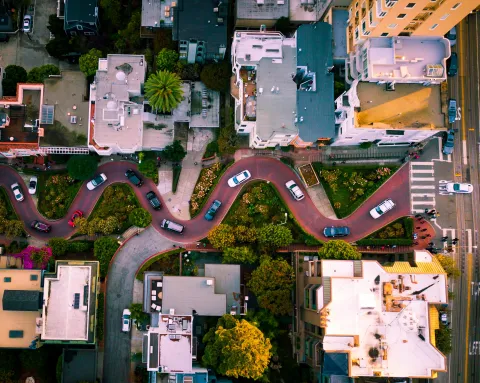
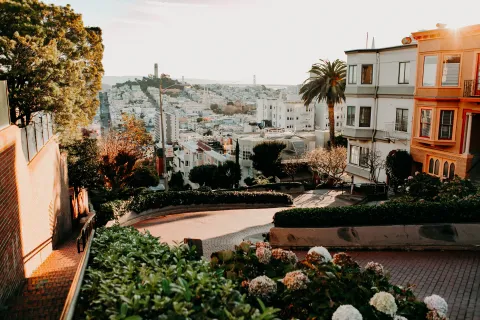
 0.5-1.5 hr stay
0.5-1.5 hr stay
Lombard Street (Free Entry)
Lombard Street and Hyde Street, san francisco
Lombard Street is famous for being the most crooked street and offering beautiful scenic panoramic views in San Francisco. It is one block downhill zig-zag stretch between Hyde and Leavenworth Streets. The street was built in the 1920s to reduce the hill's natural 27% grade steepness by creating turns in the road earning it the name “crooked street.”
- 0.6 MILES
- 14 minutes
- Get Directions

- 6:00am
- 6:15am
- 6:30am
- 6:45am
- 7:00am
- 7:15am
- 7:30am
- 7:45am
- 8:00am
- 8:15am
- 8:30am
- 8:45am
- 9:00am
- 9:15am
- 9:30am
- 9:45am
- 10:00am
- 10:15am
- 10:30am
- 10:45am
- 11:00am
- 11:15am
- 11:30am
- 11:45am
- 12:00pm
- 12:15pm
- 12:30pm
- 12:45pm
- 1:00pm
- 1:15pm
- 1:30pm
- 1:45pm
- 2:00pm
- 2:15pm
- 2:30pm
- 2:45pm
- 3:00pm
- 3:15pm
- 3:30pm
- 3:45pm
- 4:00pm
- 4:15pm
- 4:30pm
- 4:45pm
- 5:00pm
- 5:15pm
- 5:30pm
- 5:45pm
- 6:00pm
- 6:15pm
- 6:30pm
- 6:45pm
- 7:00pm
- 7:15pm
- 7:30pm
- 7:45pm
- 8:00pm
- 8:15pm
- 8:30pm
- 8:45pm
- 9:00pm
- 9:15pm
- 9:30pm
- 9:45pm
- 10:00pm
- 10:15pm
- 10:30pm
- 10:45pm
- 11:00pm
- 11:15pm
- 11:30pm
- 11:45pm
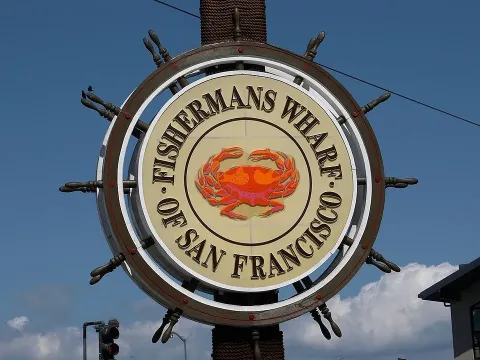
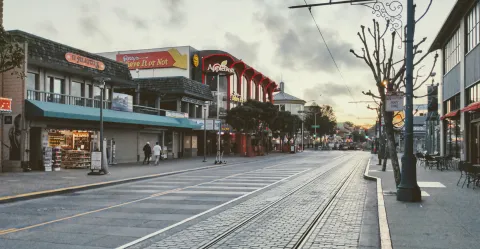
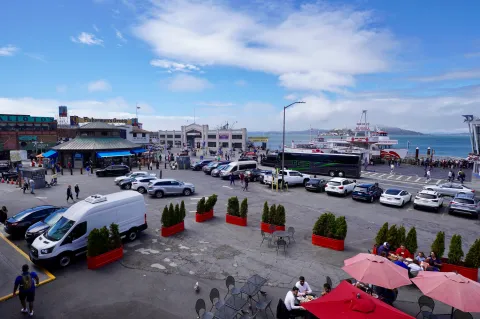
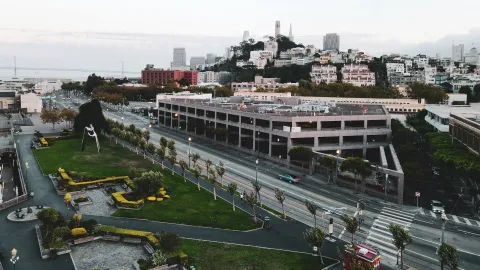
 1.0-4.0 hr stay
1.0-4.0 hr stay
Fisherman's Wharf & Pier 39 (Free Entry)
Fisherman's Wharf, san francisco
Fisherman’s Wharf is a popular tourist attraction and the most visited neighborhood in San Francisco, offering the gorgeous views of the Bay, Alcatraz, and the Golden Gate bridge. There is something for everyone in this beloved neighborhood. It is packed with things to fill the entire day, including world-class restaurants, rich maritime history, historic piers, exciting tours, attractions, street performances, museums, the aquarium, and shopping.

- 6:00am
- 6:15am
- 6:30am
- 6:45am
- 7:00am
- 7:15am
- 7:30am
- 7:45am
- 8:00am
- 8:15am
- 8:30am
- 8:45am
- 9:00am
- 9:15am
- 9:30am
- 9:45am
- 10:00am
- 10:15am
- 10:30am
- 10:45am
- 11:00am
- 11:15am
- 11:30am
- 11:45am
- 12:00pm
- 12:15pm
- 12:30pm
- 12:45pm
- 1:00pm
- 1:15pm
- 1:30pm
- 1:45pm
- 2:00pm
- 2:15pm
- 2:30pm
- 2:45pm
- 3:00pm
- 3:15pm
- 3:30pm
- 3:45pm
- 4:00pm
- 4:15pm
- 4:30pm
- 4:45pm
- 5:00pm
- 5:15pm
- 5:30pm
- 5:45pm
- 6:00pm
- 6:15pm
- 6:30pm
- 6:45pm
- 7:00pm
- 7:15pm
- 7:30pm
- 7:45pm
- 8:00pm
- 8:15pm
- 8:30pm
- 8:45pm
- 9:00pm
- 9:15pm
- 9:30pm
- 9:45pm
- 10:00pm
- 10:15pm
- 10:30pm
- 10:45pm
- 11:00pm
- 11:15pm
- 11:30pm
- 11:45pm
Eat DINNER

- 6:00am
- 6:15am
- 6:30am
- 6:45am
- 7:00am
- 7:15am
- 7:30am
- 7:45am
- 8:00am
- 8:15am
- 8:30am
- 8:45am
- 9:00am
- 9:15am
- 9:30am
- 9:45am
- 10:00am
- 10:15am
- 10:30am
- 10:45am
- 11:00am
- 11:15am
- 11:30am
- 11:45am
- 12:00pm
- 12:15pm
- 12:30pm
- 12:45pm
- 1:00pm
- 1:15pm
- 1:30pm
- 1:45pm
- 2:00pm
- 2:15pm
- 2:30pm
- 2:45pm
- 3:00pm
- 3:15pm
- 3:30pm
- 3:45pm
- 4:00pm
- 4:15pm
- 4:30pm
- 4:45pm
- 5:00pm
- 5:15pm
- 5:30pm
- 5:45pm
- 6:00pm
- 6:15pm
- 6:30pm
- 6:45pm
- 7:00pm
- 7:15pm
- 7:30pm
- 7:45pm
- 8:00pm
- 8:15pm
- 8:30pm
- 8:45pm
- 9:00pm
- 9:15pm
- 9:30pm
- 9:45pm
- 10:00pm
- 10:15pm
- 10:30pm
- 10:45pm
- 11:00pm
- 11:15pm
- 11:30pm
- 11:45pm
Eat BREAKFAST

- 6:00am
- 6:15am
- 6:30am
- 6:45am
- 7:00am
- 7:15am
- 7:30am
- 7:45am
- 8:00am
- 8:15am
- 8:30am
- 8:45am
- 9:00am
- 9:15am
- 9:30am
- 9:45am
- 10:00am
- 10:15am
- 10:30am
- 10:45am
- 11:00am
- 11:15am
- 11:30am
- 11:45am
- 12:00pm
- 12:15pm
- 12:30pm
- 12:45pm
- 1:00pm
- 1:15pm
- 1:30pm
- 1:45pm
- 2:00pm
- 2:15pm
- 2:30pm
- 2:45pm
- 3:00pm
- 3:15pm
- 3:30pm
- 3:45pm
- 4:00pm
- 4:15pm
- 4:30pm
- 4:45pm
- 5:00pm
- 5:15pm
- 5:30pm
- 5:45pm
- 6:00pm
- 6:15pm
- 6:30pm
- 6:45pm
- 7:00pm
- 7:15pm
- 7:30pm
- 7:45pm
- 8:00pm
- 8:15pm
- 8:30pm
- 8:45pm
- 9:00pm
- 9:15pm
- 9:30pm
- 9:45pm
- 10:00pm
- 10:15pm
- 10:30pm
- 10:45pm
- 11:00pm
- 11:15pm
- 11:30pm
- 11:45pm
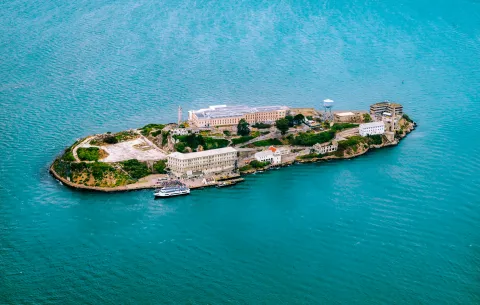
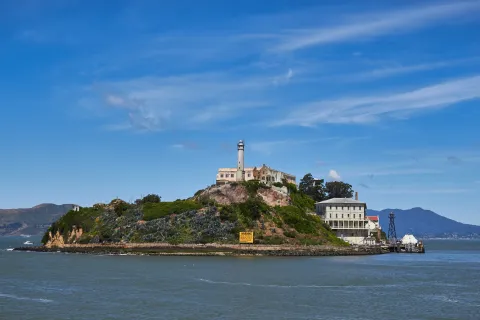
 1.0-3.0 hr stay
1.0-3.0 hr stay
Alcatraz Island ($$)
Alcatraz Island, san francisco
Alcatraz Island, aka “The Rock,” is a small island located 1.25 miles offshore from San Francisco in San Francisco Bay. It was a federal penitentiary housing some of America’s most notorious criminals from 1934-1963. The Island also served as a harbor defense fort and a military prison from 1969-1971. Once a maximum security prison, only three criminals (Frank Morris, John Anglin, and his brother Clarence Anglin) managed to escape from it; US Marshals Service is still looking for answers about their whereabouts. Alcatraz is one of San Francisco's most prominent landmarks and tourist attractions today.

- 6:00am
- 6:15am
- 6:30am
- 6:45am
- 7:00am
- 7:15am
- 7:30am
- 7:45am
- 8:00am
- 8:15am
- 8:30am
- 8:45am
- 9:00am
- 9:15am
- 9:30am
- 9:45am
- 10:00am
- 10:15am
- 10:30am
- 10:45am
- 11:00am
- 11:15am
- 11:30am
- 11:45am
- 12:00pm
- 12:15pm
- 12:30pm
- 12:45pm
- 1:00pm
- 1:15pm
- 1:30pm
- 1:45pm
- 2:00pm
- 2:15pm
- 2:30pm
- 2:45pm
- 3:00pm
- 3:15pm
- 3:30pm
- 3:45pm
- 4:00pm
- 4:15pm
- 4:30pm
- 4:45pm
- 5:00pm
- 5:15pm
- 5:30pm
- 5:45pm
- 6:00pm
- 6:15pm
- 6:30pm
- 6:45pm
- 7:00pm
- 7:15pm
- 7:30pm
- 7:45pm
- 8:00pm
- 8:15pm
- 8:30pm
- 8:45pm
- 9:00pm
- 9:15pm
- 9:30pm
- 9:45pm
- 10:00pm
- 10:15pm
- 10:30pm
- 10:45pm
- 11:00pm
- 11:15pm
- 11:30pm
- 11:45pm
Eat LUNCH

- 6:00am
- 6:15am
- 6:30am
- 6:45am
- 7:00am
- 7:15am
- 7:30am
- 7:45am
- 8:00am
- 8:15am
- 8:30am
- 8:45am
- 9:00am
- 9:15am
- 9:30am
- 9:45am
- 10:00am
- 10:15am
- 10:30am
- 10:45am
- 11:00am
- 11:15am
- 11:30am
- 11:45am
- 12:00pm
- 12:15pm
- 12:30pm
- 12:45pm
- 1:00pm
- 1:15pm
- 1:30pm
- 1:45pm
- 2:00pm
- 2:15pm
- 2:30pm
- 2:45pm
- 3:00pm
- 3:15pm
- 3:30pm
- 3:45pm
- 4:00pm
- 4:15pm
- 4:30pm
- 4:45pm
- 5:00pm
- 5:15pm
- 5:30pm
- 5:45pm
- 6:00pm
- 6:15pm
- 6:30pm
- 6:45pm
- 7:00pm
- 7:15pm
- 7:30pm
- 7:45pm
- 8:00pm
- 8:15pm
- 8:30pm
- 8:45pm
- 9:00pm
- 9:15pm
- 9:30pm
- 9:45pm
- 10:00pm
- 10:15pm
- 10:30pm
- 10:45pm
- 11:00pm
- 11:15pm
- 11:30pm
- 11:45pm
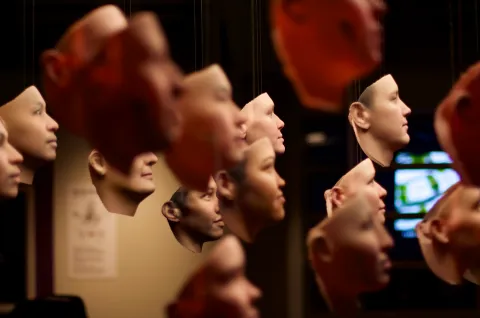
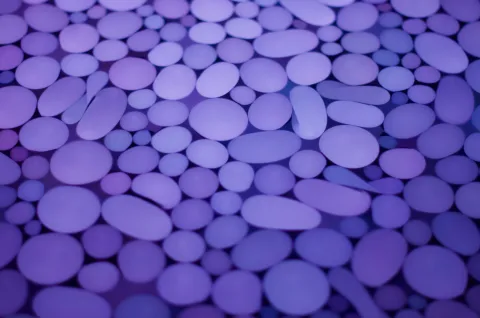
 1.0-3.0 hr stay
1.0-3.0 hr stay
Exploratorium ($$)
Pier 15 Embarcadero at, Green St, san francisco
Located on the Embarcadero waterfront at Pier 15, The Exploratorium is a public learning laboratory and museum exploring the world through science, art, and human perception. There are hundreds of explore-for-yourself exhibits, film screenings, evening art and science events for adults, plus much more. The museum uses playful fun experimentation to introduce visitors to scientific principles. They also create professional development programs for educators and are at the forefront of changing how science is taught.
- 0.5 MILES
- 12 minutes
- Get Directions

- 6:00am
- 6:15am
- 6:30am
- 6:45am
- 7:00am
- 7:15am
- 7:30am
- 7:45am
- 8:00am
- 8:15am
- 8:30am
- 8:45am
- 9:00am
- 9:15am
- 9:30am
- 9:45am
- 10:00am
- 10:15am
- 10:30am
- 10:45am
- 11:00am
- 11:15am
- 11:30am
- 11:45am
- 12:00pm
- 12:15pm
- 12:30pm
- 12:45pm
- 1:00pm
- 1:15pm
- 1:30pm
- 1:45pm
- 2:00pm
- 2:15pm
- 2:30pm
- 2:45pm
- 3:00pm
- 3:15pm
- 3:30pm
- 3:45pm
- 4:00pm
- 4:15pm
- 4:30pm
- 4:45pm
- 5:00pm
- 5:15pm
- 5:30pm
- 5:45pm
- 6:00pm
- 6:15pm
- 6:30pm
- 6:45pm
- 7:00pm
- 7:15pm
- 7:30pm
- 7:45pm
- 8:00pm
- 8:15pm
- 8:30pm
- 8:45pm
- 9:00pm
- 9:15pm
- 9:30pm
- 9:45pm
- 10:00pm
- 10:15pm
- 10:30pm
- 10:45pm
- 11:00pm
- 11:15pm
- 11:30pm
- 11:45pm
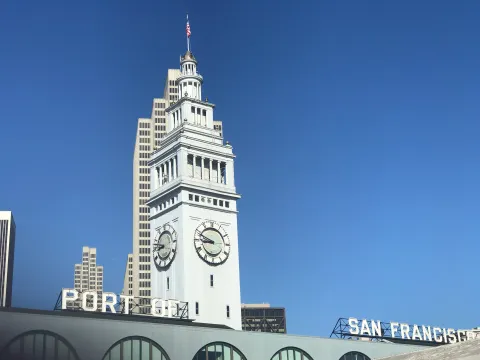
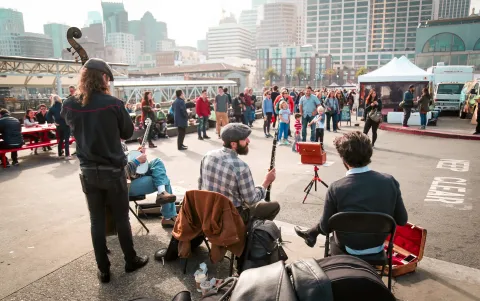
 1.0-3.0 hr stay
1.0-3.0 hr stay
Ferry Building Marketplace (Free Entry)
1 Ferry Building, san francisco
The Ferry Building Marketplace is a world-class public food market located along the Embarcadero at the foot of Market Street. It is the center of a transit hub that connects San Francisco’s neighborhoods and the surrounding bay area communities. It is a famous landmark with its dramatic clock tower that has been the icon of the San Francisco waterfront for more than 100 years. The food market is organized along a dramatic indoor street, the Nave. Today ferry terminals operate at Larkspur, Sausalito, Vallejo, and Alameda, with plans for continuing network improvements and expansion.

- 6:00am
- 6:15am
- 6:30am
- 6:45am
- 7:00am
- 7:15am
- 7:30am
- 7:45am
- 8:00am
- 8:15am
- 8:30am
- 8:45am
- 9:00am
- 9:15am
- 9:30am
- 9:45am
- 10:00am
- 10:15am
- 10:30am
- 10:45am
- 11:00am
- 11:15am
- 11:30am
- 11:45am
- 12:00pm
- 12:15pm
- 12:30pm
- 12:45pm
- 1:00pm
- 1:15pm
- 1:30pm
- 1:45pm
- 2:00pm
- 2:15pm
- 2:30pm
- 2:45pm
- 3:00pm
- 3:15pm
- 3:30pm
- 3:45pm
- 4:00pm
- 4:15pm
- 4:30pm
- 4:45pm
- 5:00pm
- 5:15pm
- 5:30pm
- 5:45pm
- 6:00pm
- 6:15pm
- 6:30pm
- 6:45pm
- 7:00pm
- 7:15pm
- 7:30pm
- 7:45pm
- 8:00pm
- 8:15pm
- 8:30pm
- 8:45pm
- 9:00pm
- 9:15pm
- 9:30pm
- 9:45pm
- 10:00pm
- 10:15pm
- 10:30pm
- 10:45pm
- 11:00pm
- 11:15pm
- 11:30pm
- 11:45pm
Eat DINNER

- 6:00am
- 6:15am
- 6:30am
- 6:45am
- 7:00am
- 7:15am
- 7:30am
- 7:45am
- 8:00am
- 8:15am
- 8:30am
- 8:45am
- 9:00am
- 9:15am
- 9:30am
- 9:45am
- 10:00am
- 10:15am
- 10:30am
- 10:45am
- 11:00am
- 11:15am
- 11:30am
- 11:45am
- 12:00pm
- 12:15pm
- 12:30pm
- 12:45pm
- 1:00pm
- 1:15pm
- 1:30pm
- 1:45pm
- 2:00pm
- 2:15pm
- 2:30pm
- 2:45pm
- 3:00pm
- 3:15pm
- 3:30pm
- 3:45pm
- 4:00pm
- 4:15pm
- 4:30pm
- 4:45pm
- 5:00pm
- 5:15pm
- 5:30pm
- 5:45pm
- 6:00pm
- 6:15pm
- 6:30pm
- 6:45pm
- 7:00pm
- 7:15pm
- 7:30pm
- 7:45pm
- 8:00pm
- 8:15pm
- 8:30pm
- 8:45pm
- 9:00pm
- 9:15pm
- 9:30pm
- 9:45pm
- 10:00pm
- 10:15pm
- 10:30pm
- 10:45pm
- 11:00pm
- 11:15pm
- 11:30pm
- 11:45pm
Eat BREAKFAST

- 6:00am
- 6:15am
- 6:30am
- 6:45am
- 7:00am
- 7:15am
- 7:30am
- 7:45am
- 8:00am
- 8:15am
- 8:30am
- 8:45am
- 9:00am
- 9:15am
- 9:30am
- 9:45am
- 10:00am
- 10:15am
- 10:30am
- 10:45am
- 11:00am
- 11:15am
- 11:30am
- 11:45am
- 12:00pm
- 12:15pm
- 12:30pm
- 12:45pm
- 1:00pm
- 1:15pm
- 1:30pm
- 1:45pm
- 2:00pm
- 2:15pm
- 2:30pm
- 2:45pm
- 3:00pm
- 3:15pm
- 3:30pm
- 3:45pm
- 4:00pm
- 4:15pm
- 4:30pm
- 4:45pm
- 5:00pm
- 5:15pm
- 5:30pm
- 5:45pm
- 6:00pm
- 6:15pm
- 6:30pm
- 6:45pm
- 7:00pm
- 7:15pm
- 7:30pm
- 7:45pm
- 8:00pm
- 8:15pm
- 8:30pm
- 8:45pm
- 9:00pm
- 9:15pm
- 9:30pm
- 9:45pm
- 10:00pm
- 10:15pm
- 10:30pm
- 10:45pm
- 11:00pm
- 11:15pm
- 11:30pm
- 11:45pm
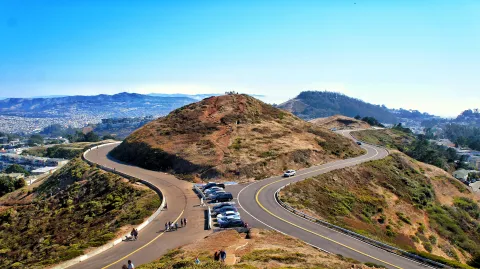
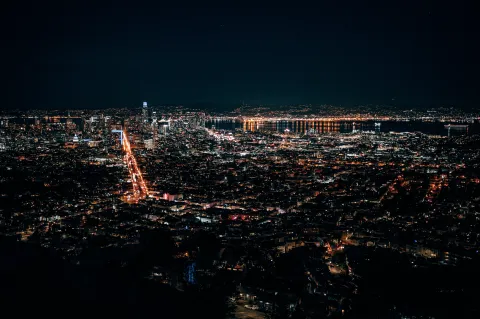
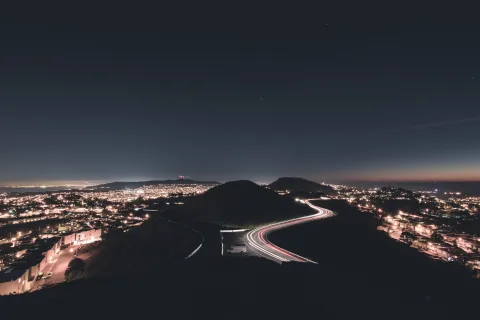
 0.5-1.0 hr stay
0.5-1.0 hr stay
Twin Peaks (Free Entry)
501 Twin Peaks Blvd, san francisco
Twin Peaks, at 922 feet in elevation, is a world-famous tourist attraction that offers spectacular views of the Bay Area. The north peak (aka Eureka Peak) and south peak (aka Noe Peak) provide postcard views and a treasure trove of animal and plant diversity. Most visitors to Twin Peaks drive, walk or bike to the north peak parking lot to enjoy 180-degree views of the Bay Area.
- 1.5 MILES
- 36 minutes
- Get Directions

- 6:00am
- 6:15am
- 6:30am
- 6:45am
- 7:00am
- 7:15am
- 7:30am
- 7:45am
- 8:00am
- 8:15am
- 8:30am
- 8:45am
- 9:00am
- 9:15am
- 9:30am
- 9:45am
- 10:00am
- 10:15am
- 10:30am
- 10:45am
- 11:00am
- 11:15am
- 11:30am
- 11:45am
- 12:00pm
- 12:15pm
- 12:30pm
- 12:45pm
- 1:00pm
- 1:15pm
- 1:30pm
- 1:45pm
- 2:00pm
- 2:15pm
- 2:30pm
- 2:45pm
- 3:00pm
- 3:15pm
- 3:30pm
- 3:45pm
- 4:00pm
- 4:15pm
- 4:30pm
- 4:45pm
- 5:00pm
- 5:15pm
- 5:30pm
- 5:45pm
- 6:00pm
- 6:15pm
- 6:30pm
- 6:45pm
- 7:00pm
- 7:15pm
- 7:30pm
- 7:45pm
- 8:00pm
- 8:15pm
- 8:30pm
- 8:45pm
- 9:00pm
- 9:15pm
- 9:30pm
- 9:45pm
- 10:00pm
- 10:15pm
- 10:30pm
- 10:45pm
- 11:00pm
- 11:15pm
- 11:30pm
- 11:45pm
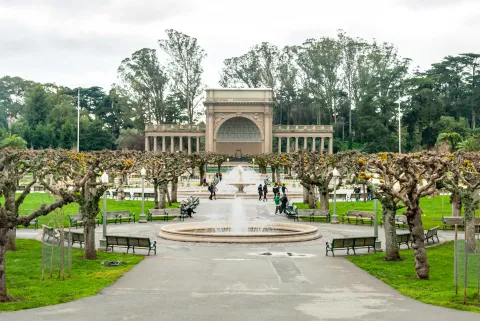
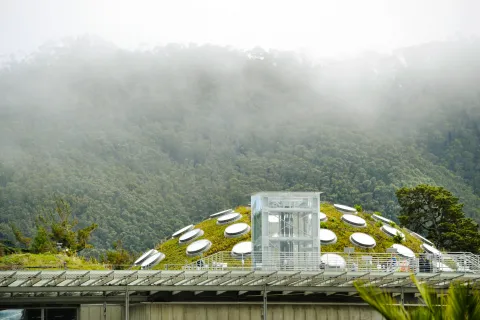
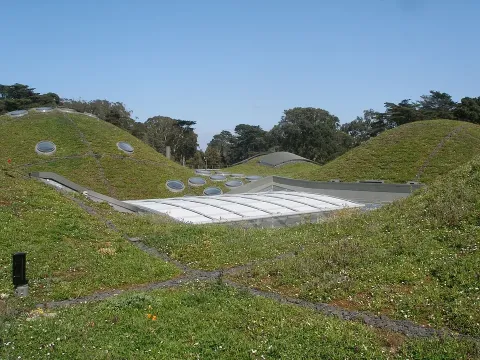
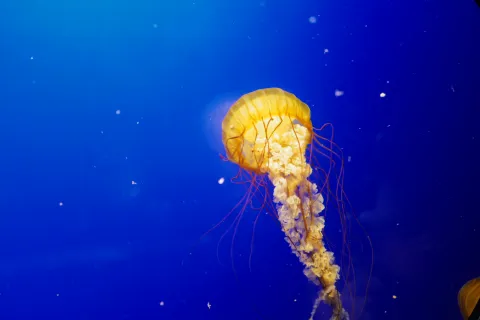
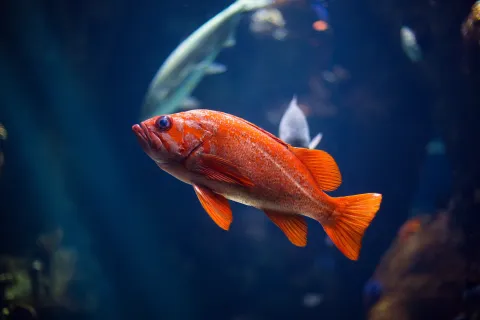
 1.0-3.0 hr stay
1.0-3.0 hr stay
California Academy of Sciences ($$$)
55 Music Concourse Dr, san francisco
There is a lot to see in this famous institution. Visitors who can spend only 1-2 hours are recommended to visit Steinhart Aquarium (the newest exhibit featuring over a dozen animals that bite, sting and stun), Osher Rainforest (the four-story living rainforest), Living Roof, African Penguins, and the Swamp (see albino Aligator!). Visitors who can spend more time should also visit Giants of Land and Sea, Gems and Minerals, Reef Lagoon, and Color of Life. For kids: There is a “kid-sized” door at the Children’s Eel Garden, located next to the Philippine Coral Reef exhibit. East Garden has plenty of room to run around and structures to play on. Science Today station offers engaging short videos on Academy science. Avoid the neighborhood-free-weekends days ( https://www.calacademy.org/neighborhood-free-weekends ) as there would be a lot of crowds. Check out the daily events calendar: https://www.calacademy.org/daily-calendar On Thursday nights, adults 21+ can enjoy live music, cocktails, special activities, and entertainment while exploring the entire Academy after dark. Visitors can purchase “Panguins + Pajamas Sleepovers” ( https://www.calacademy.org/penguinspajamas-sleepovers ), VIP Tours, and Birthday Parties (https://www.calacademy.org/tours-specialty-programs ) tickets for more fun.

- 6:00am
- 6:15am
- 6:30am
- 6:45am
- 7:00am
- 7:15am
- 7:30am
- 7:45am
- 8:00am
- 8:15am
- 8:30am
- 8:45am
- 9:00am
- 9:15am
- 9:30am
- 9:45am
- 10:00am
- 10:15am
- 10:30am
- 10:45am
- 11:00am
- 11:15am
- 11:30am
- 11:45am
- 12:00pm
- 12:15pm
- 12:30pm
- 12:45pm
- 1:00pm
- 1:15pm
- 1:30pm
- 1:45pm
- 2:00pm
- 2:15pm
- 2:30pm
- 2:45pm
- 3:00pm
- 3:15pm
- 3:30pm
- 3:45pm
- 4:00pm
- 4:15pm
- 4:30pm
- 4:45pm
- 5:00pm
- 5:15pm
- 5:30pm
- 5:45pm
- 6:00pm
- 6:15pm
- 6:30pm
- 6:45pm
- 7:00pm
- 7:15pm
- 7:30pm
- 7:45pm
- 8:00pm
- 8:15pm
- 8:30pm
- 8:45pm
- 9:00pm
- 9:15pm
- 9:30pm
- 9:45pm
- 10:00pm
- 10:15pm
- 10:30pm
- 10:45pm
- 11:00pm
- 11:15pm
- 11:30pm
- 11:45pm
Eat LUNCH

- 6:00am
- 6:15am
- 6:30am
- 6:45am
- 7:00am
- 7:15am
- 7:30am
- 7:45am
- 8:00am
- 8:15am
- 8:30am
- 8:45am
- 9:00am
- 9:15am
- 9:30am
- 9:45am
- 10:00am
- 10:15am
- 10:30am
- 10:45am
- 11:00am
- 11:15am
- 11:30am
- 11:45am
- 12:00pm
- 12:15pm
- 12:30pm
- 12:45pm
- 1:00pm
- 1:15pm
- 1:30pm
- 1:45pm
- 2:00pm
- 2:15pm
- 2:30pm
- 2:45pm
- 3:00pm
- 3:15pm
- 3:30pm
- 3:45pm
- 4:00pm
- 4:15pm
- 4:30pm
- 4:45pm
- 5:00pm
- 5:15pm
- 5:30pm
- 5:45pm
- 6:00pm
- 6:15pm
- 6:30pm
- 6:45pm
- 7:00pm
- 7:15pm
- 7:30pm
- 7:45pm
- 8:00pm
- 8:15pm
- 8:30pm
- 8:45pm
- 9:00pm
- 9:15pm
- 9:30pm
- 9:45pm
- 10:00pm
- 10:15pm
- 10:30pm
- 10:45pm
- 11:00pm
- 11:15pm
- 11:30pm
- 11:45pm
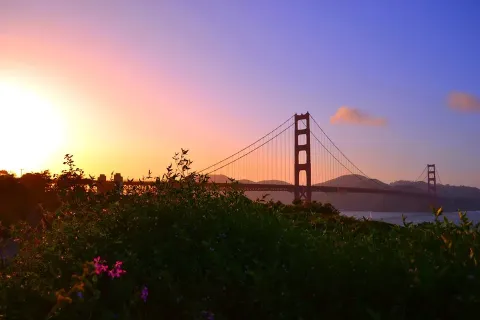
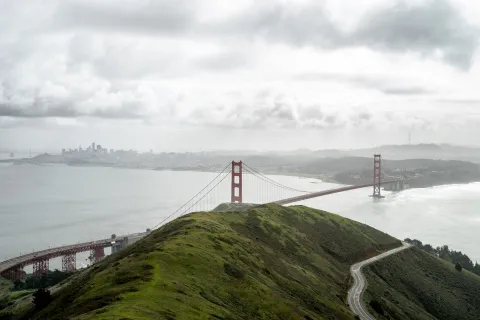
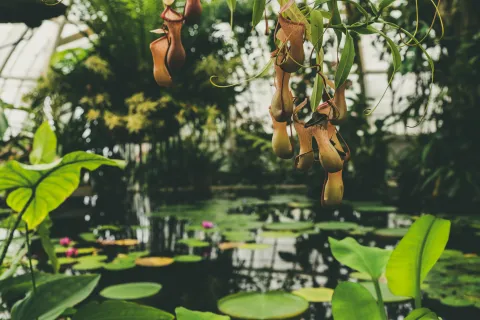
 1.0-2.5 hr stay
1.0-2.5 hr stay
Golden Gate Park (Free Entry)
Golden Gate Park, san francisco
Golden Gate Park is the iconic 1,017 acres urban park, a garden oasis, and the third most visited park in the United States. The park is free to see, but there are popular attractions such as the de Young Museum, California Academy of Science, Conservatory of flowers, etc., charge admission. It is a place where people can relax and reconnect with the natural world. Two of the City’s most impressive museums are found in Golden Gate Park. The park is filled with gardens, museums, art, flowers, trees, lakes, birds, and wildlife. There are also plenty of opportunities to participate in sports, clubs, and other activities. Golden Gate Park has something for everyone.
- 4.4 MILES
- 106 minutes
- Get Directions

- 6:00am
- 6:15am
- 6:30am
- 6:45am
- 7:00am
- 7:15am
- 7:30am
- 7:45am
- 8:00am
- 8:15am
- 8:30am
- 8:45am
- 9:00am
- 9:15am
- 9:30am
- 9:45am
- 10:00am
- 10:15am
- 10:30am
- 10:45am
- 11:00am
- 11:15am
- 11:30am
- 11:45am
- 12:00pm
- 12:15pm
- 12:30pm
- 12:45pm
- 1:00pm
- 1:15pm
- 1:30pm
- 1:45pm
- 2:00pm
- 2:15pm
- 2:30pm
- 2:45pm
- 3:00pm
- 3:15pm
- 3:30pm
- 3:45pm
- 4:00pm
- 4:15pm
- 4:30pm
- 4:45pm
- 5:00pm
- 5:15pm
- 5:30pm
- 5:45pm
- 6:00pm
- 6:15pm
- 6:30pm
- 6:45pm
- 7:00pm
- 7:15pm
- 7:30pm
- 7:45pm
- 8:00pm
- 8:15pm
- 8:30pm
- 8:45pm
- 9:00pm
- 9:15pm
- 9:30pm
- 9:45pm
- 10:00pm
- 10:15pm
- 10:30pm
- 10:45pm
- 11:00pm
- 11:15pm
- 11:30pm
- 11:45pm
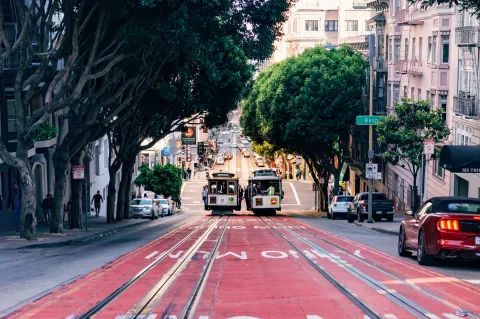
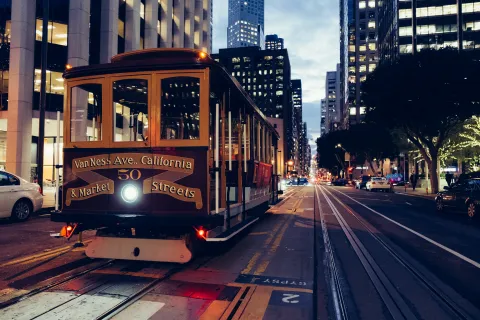
 0.5-1.0 hr stay
0.5-1.0 hr stay
Cable Car System ($)
Powell St & Market St, san francisco
A visit to San Francisco is only complete with riding the postcard-perfect moving national landmark, the Cable Cars. Unique to San Francisco, cable cars are pulled along by cables running beneath the street. Andrew Smith Hallidie got the inspiration for Cable Cars after seeing an accident when a horse-drawn streetcar slid backward under its heavy load in 1869. Cable cars launched after four years in 1873.

- 6:00am
- 6:15am
- 6:30am
- 6:45am
- 7:00am
- 7:15am
- 7:30am
- 7:45am
- 8:00am
- 8:15am
- 8:30am
- 8:45am
- 9:00am
- 9:15am
- 9:30am
- 9:45am
- 10:00am
- 10:15am
- 10:30am
- 10:45am
- 11:00am
- 11:15am
- 11:30am
- 11:45am
- 12:00pm
- 12:15pm
- 12:30pm
- 12:45pm
- 1:00pm
- 1:15pm
- 1:30pm
- 1:45pm
- 2:00pm
- 2:15pm
- 2:30pm
- 2:45pm
- 3:00pm
- 3:15pm
- 3:30pm
- 3:45pm
- 4:00pm
- 4:15pm
- 4:30pm
- 4:45pm
- 5:00pm
- 5:15pm
- 5:30pm
- 5:45pm
- 6:00pm
- 6:15pm
- 6:30pm
- 6:45pm
- 7:00pm
- 7:15pm
- 7:30pm
- 7:45pm
- 8:00pm
- 8:15pm
- 8:30pm
- 8:45pm
- 9:00pm
- 9:15pm
- 9:30pm
- 9:45pm
- 10:00pm
- 10:15pm
- 10:30pm
- 10:45pm
- 11:00pm
- 11:15pm
- 11:30pm
- 11:45pm
Eat DINNER

- 6:00am
- 6:15am
- 6:30am
- 6:45am
- 7:00am
- 7:15am
- 7:30am
- 7:45am
- 8:00am
- 8:15am
- 8:30am
- 8:45am
- 9:00am
- 9:15am
- 9:30am
- 9:45am
- 10:00am
- 10:15am
- 10:30am
- 10:45am
- 11:00am
- 11:15am
- 11:30am
- 11:45am
- 12:00pm
- 12:15pm
- 12:30pm
- 12:45pm
- 1:00pm
- 1:15pm
- 1:30pm
- 1:45pm
- 2:00pm
- 2:15pm
- 2:30pm
- 2:45pm
- 3:00pm
- 3:15pm
- 3:30pm
- 3:45pm
- 4:00pm
- 4:15pm
- 4:30pm
- 4:45pm
- 5:00pm
- 5:15pm
- 5:30pm
- 5:45pm
- 6:00pm
- 6:15pm
- 6:30pm
- 6:45pm
- 7:00pm
- 7:15pm
- 7:30pm
- 7:45pm
- 8:00pm
- 8:15pm
- 8:30pm
- 8:45pm
- 9:00pm
- 9:15pm
- 9:30pm
- 9:45pm
- 10:00pm
- 10:15pm
- 10:30pm
- 10:45pm
- 11:00pm
- 11:15pm
- 11:30pm
- 11:45pm
Eat BREAKFAST

- 6:00am
- 6:15am
- 6:30am
- 6:45am
- 7:00am
- 7:15am
- 7:30am
- 7:45am
- 8:00am
- 8:15am
- 8:30am
- 8:45am
- 9:00am
- 9:15am
- 9:30am
- 9:45am
- 10:00am
- 10:15am
- 10:30am
- 10:45am
- 11:00am
- 11:15am
- 11:30am
- 11:45am
- 12:00pm
- 12:15pm
- 12:30pm
- 12:45pm
- 1:00pm
- 1:15pm
- 1:30pm
- 1:45pm
- 2:00pm
- 2:15pm
- 2:30pm
- 2:45pm
- 3:00pm
- 3:15pm
- 3:30pm
- 3:45pm
- 4:00pm
- 4:15pm
- 4:30pm
- 4:45pm
- 5:00pm
- 5:15pm
- 5:30pm
- 5:45pm
- 6:00pm
- 6:15pm
- 6:30pm
- 6:45pm
- 7:00pm
- 7:15pm
- 7:30pm
- 7:45pm
- 8:00pm
- 8:15pm
- 8:30pm
- 8:45pm
- 9:00pm
- 9:15pm
- 9:30pm
- 9:45pm
- 10:00pm
- 10:15pm
- 10:30pm
- 10:45pm
- 11:00pm
- 11:15pm
- 11:30pm
- 11:45pm
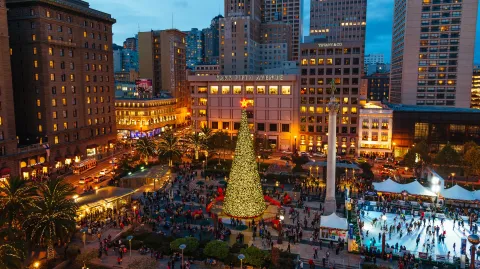
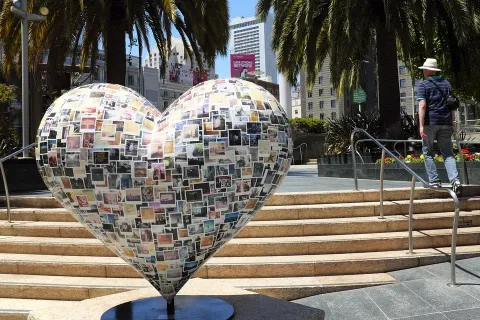
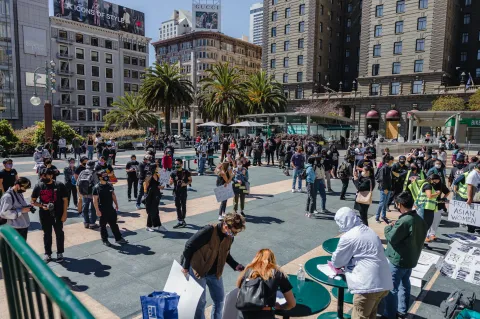
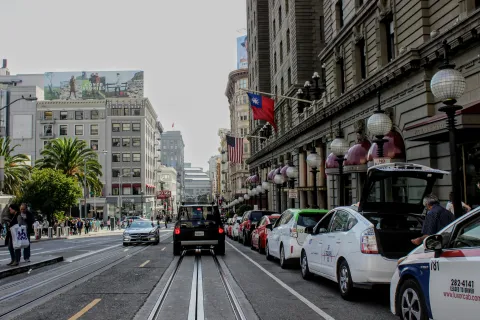
 0.5-1.0 hr stay
0.5-1.0 hr stay
Union Square (Free Entry)
333 Post St, san francisco
Union Square is a 2.4-acre popular public square for locals and tourists in downtown San Francisco. Union square is surrounded by high-end shops, art galleries, department stores, gift shops, upscale boutiques, theatres, restaurants, and hotels. The famous Macy’s store is right at Union Square and so is the flagship Tiffany & Co store. The area got its name because it was once used for Thomas Starr King rallies.
- 0.2 MILES
- 5 minutes
- Get Directions

- 6:00am
- 6:15am
- 6:30am
- 6:45am
- 7:00am
- 7:15am
- 7:30am
- 7:45am
- 8:00am
- 8:15am
- 8:30am
- 8:45am
- 9:00am
- 9:15am
- 9:30am
- 9:45am
- 10:00am
- 10:15am
- 10:30am
- 10:45am
- 11:00am
- 11:15am
- 11:30am
- 11:45am
- 12:00pm
- 12:15pm
- 12:30pm
- 12:45pm
- 1:00pm
- 1:15pm
- 1:30pm
- 1:45pm
- 2:00pm
- 2:15pm
- 2:30pm
- 2:45pm
- 3:00pm
- 3:15pm
- 3:30pm
- 3:45pm
- 4:00pm
- 4:15pm
- 4:30pm
- 4:45pm
- 5:00pm
- 5:15pm
- 5:30pm
- 5:45pm
- 6:00pm
- 6:15pm
- 6:30pm
- 6:45pm
- 7:00pm
- 7:15pm
- 7:30pm
- 7:45pm
- 8:00pm
- 8:15pm
- 8:30pm
- 8:45pm
- 9:00pm
- 9:15pm
- 9:30pm
- 9:45pm
- 10:00pm
- 10:15pm
- 10:30pm
- 10:45pm
- 11:00pm
- 11:15pm
- 11:30pm
- 11:45pm
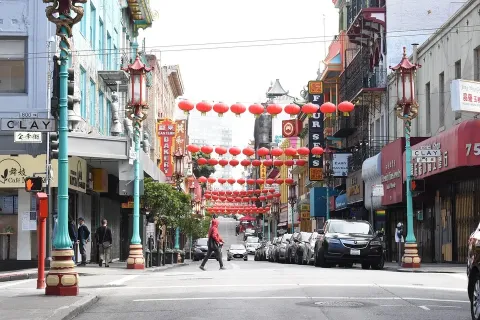
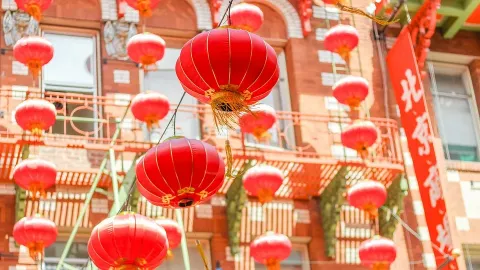
 1.0-2.0 hr stay
1.0-2.0 hr stay
Chinatown (Free Entry)
Dragon Gate Chinatown, san francisco
Chinatown in San Francisco is one of the oldest Chinatowns in North America and the largest outside of Asia. Established in 1848, Chinatown was rebuilt entirely in the Chinese style after the 1906 earthquake, and it became even more attractive than before the disaster. Chinatown is a bustling “city within a city.” and the most densely populated area of San Francisco, with a lot to see and do.

- 6:00am
- 6:15am
- 6:30am
- 6:45am
- 7:00am
- 7:15am
- 7:30am
- 7:45am
- 8:00am
- 8:15am
- 8:30am
- 8:45am
- 9:00am
- 9:15am
- 9:30am
- 9:45am
- 10:00am
- 10:15am
- 10:30am
- 10:45am
- 11:00am
- 11:15am
- 11:30am
- 11:45am
- 12:00pm
- 12:15pm
- 12:30pm
- 12:45pm
- 1:00pm
- 1:15pm
- 1:30pm
- 1:45pm
- 2:00pm
- 2:15pm
- 2:30pm
- 2:45pm
- 3:00pm
- 3:15pm
- 3:30pm
- 3:45pm
- 4:00pm
- 4:15pm
- 4:30pm
- 4:45pm
- 5:00pm
- 5:15pm
- 5:30pm
- 5:45pm
- 6:00pm
- 6:15pm
- 6:30pm
- 6:45pm
- 7:00pm
- 7:15pm
- 7:30pm
- 7:45pm
- 8:00pm
- 8:15pm
- 8:30pm
- 8:45pm
- 9:00pm
- 9:15pm
- 9:30pm
- 9:45pm
- 10:00pm
- 10:15pm
- 10:30pm
- 10:45pm
- 11:00pm
- 11:15pm
- 11:30pm
- 11:45pm
Eat LUNCH

- 6:00am
- 6:15am
- 6:30am
- 6:45am
- 7:00am
- 7:15am
- 7:30am
- 7:45am
- 8:00am
- 8:15am
- 8:30am
- 8:45am
- 9:00am
- 9:15am
- 9:30am
- 9:45am
- 10:00am
- 10:15am
- 10:30am
- 10:45am
- 11:00am
- 11:15am
- 11:30am
- 11:45am
- 12:00pm
- 12:15pm
- 12:30pm
- 12:45pm
- 1:00pm
- 1:15pm
- 1:30pm
- 1:45pm
- 2:00pm
- 2:15pm
- 2:30pm
- 2:45pm
- 3:00pm
- 3:15pm
- 3:30pm
- 3:45pm
- 4:00pm
- 4:15pm
- 4:30pm
- 4:45pm
- 5:00pm
- 5:15pm
- 5:30pm
- 5:45pm
- 6:00pm
- 6:15pm
- 6:30pm
- 6:45pm
- 7:00pm
- 7:15pm
- 7:30pm
- 7:45pm
- 8:00pm
- 8:15pm
- 8:30pm
- 8:45pm
- 9:00pm
- 9:15pm
- 9:30pm
- 9:45pm
- 10:00pm
- 10:15pm
- 10:30pm
- 10:45pm
- 11:00pm
- 11:15pm
- 11:30pm
- 11:45pm
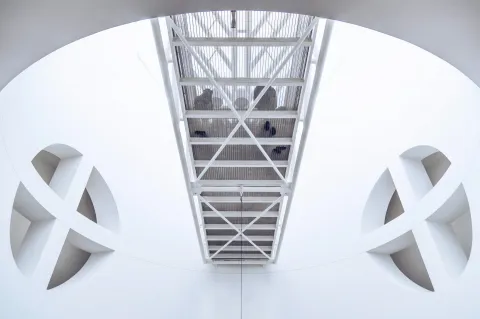
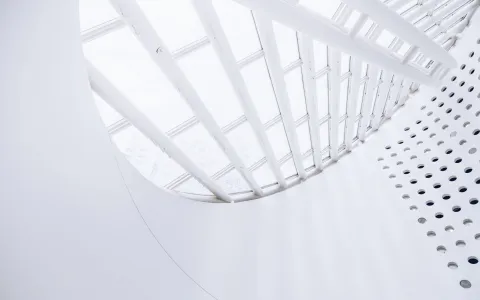
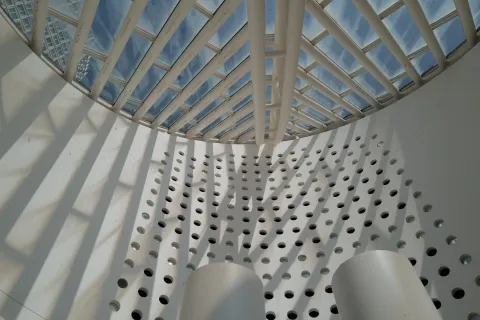
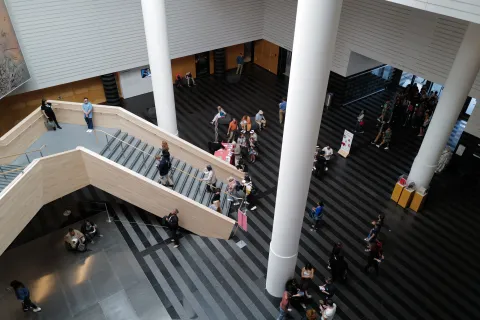
 1.0-2.5 hr stay
1.0-2.5 hr stay
San Francisco Museum of Modern Art ($$)
151 3rd St, San Francisco, san francisco
The San Francisco Museum of Modern Art (SFMOMA) is one of the largest museums of modern and contemporary art in the United States and a thriving cultural center for the Bay Area. They have a remarkable collection of paintings, sculptures, photography, architecture, design, and media arts on seven gallery floors. SFMOMA also offers 45,000 square feet of free, art-filled public space open to all.

- 6:00am
- 6:15am
- 6:30am
- 6:45am
- 7:00am
- 7:15am
- 7:30am
- 7:45am
- 8:00am
- 8:15am
- 8:30am
- 8:45am
- 9:00am
- 9:15am
- 9:30am
- 9:45am
- 10:00am
- 10:15am
- 10:30am
- 10:45am
- 11:00am
- 11:15am
- 11:30am
- 11:45am
- 12:00pm
- 12:15pm
- 12:30pm
- 12:45pm
- 1:00pm
- 1:15pm
- 1:30pm
- 1:45pm
- 2:00pm
- 2:15pm
- 2:30pm
- 2:45pm
- 3:00pm
- 3:15pm
- 3:30pm
- 3:45pm
- 4:00pm
- 4:15pm
- 4:30pm
- 4:45pm
- 5:00pm
- 5:15pm
- 5:30pm
- 5:45pm
- 6:00pm
- 6:15pm
- 6:30pm
- 6:45pm
- 7:00pm
- 7:15pm
- 7:30pm
- 7:45pm
- 8:00pm
- 8:15pm
- 8:30pm
- 8:45pm
- 9:00pm
- 9:15pm
- 9:30pm
- 9:45pm
- 10:00pm
- 10:15pm
- 10:30pm
- 10:45pm
- 11:00pm
- 11:15pm
- 11:30pm
- 11:45pm